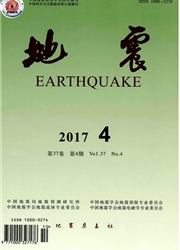

 中文摘要:
中文摘要:
利用几个典型全球板块相对运动模型的欧拉矢量,计算沿这些模型板块边界段的两两板块之间的相对运动速度,据此进一步计算一定时间尺度内这些板块边界段的面积变化。并依据已有对相应各边界段性质-包括张性、压性及走滑性质的研究,设定组成各边界段的两个板块如何分别承担其面积变化的情况,得到各模型中每个板块的面积变化和全球表面积变化总量。结果显示,在近100万年时间尺度内,地球南半球表面积增大、北半球表面积减小,地球总表面积变化为2.9万-3.6万km^2。如果假设地球表面积的增量完全由体积膨胀引起,这将对应地球半径160-250 m的增加。以NUVEL-1模型为例,全球14个板块中,非洲、南美与南极三个板块的面积持续增大,其余11个板块的面积在逐步减小;不过,非洲、南美与南极这三个板块面积增大部分之和,能够完全抵消掉其余11板块面积之减小,而且使全球总体表面积增加。本文进一步讨论了一些其他因素,例如俯冲带前进与后退等影响地球表面积变化的情况。
 英文摘要:
英文摘要:
Basing on their Euler Poles, we calculated the relative velocities between every two plates in the typical global plate motion models, respectively, and estimated area changes along these boundaries. In our calculation, plates on both sides accommodate the area changes depending on the boundary types: extensional, convergent or transform, so we can estimate area changing of every plate and then the global surface area change. Our preliminary results show that the area of southern hemisphere increased while that of the northern hemisphere decreased in the past 1 million years, and the global area increased between 26000 and 36000 kme, which was corresponding to 160-250 m incremental in the earth's radius if all these areas were attributed to the earth's expanding. Taking NU- VEL-1 model as an example, among all the 14 plates in this model, 11 of them were in decreasing, but the global area increased because of the larger amount of incremental from Africa, North America and Antarctica. Finally, we also discussed factors affecting the global area change such as subduction zone retreating and backarc spreading.
 同期刊论文项目
同期刊论文项目
 同项目期刊论文
同项目期刊论文
 期刊信息
期刊信息
